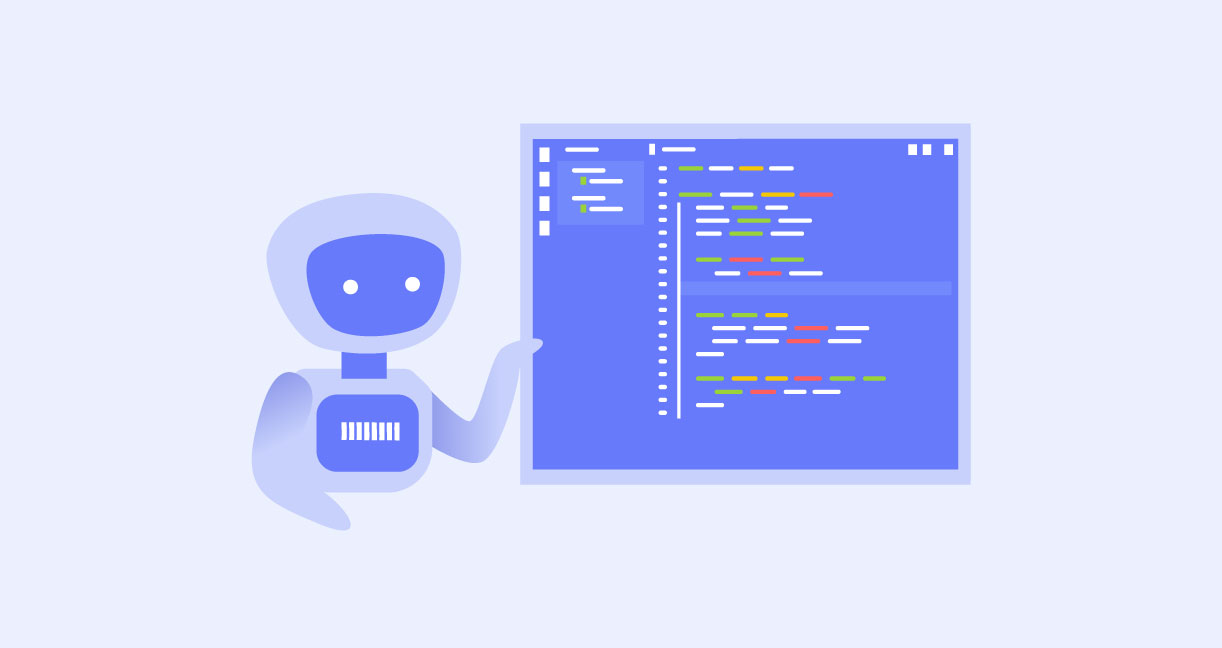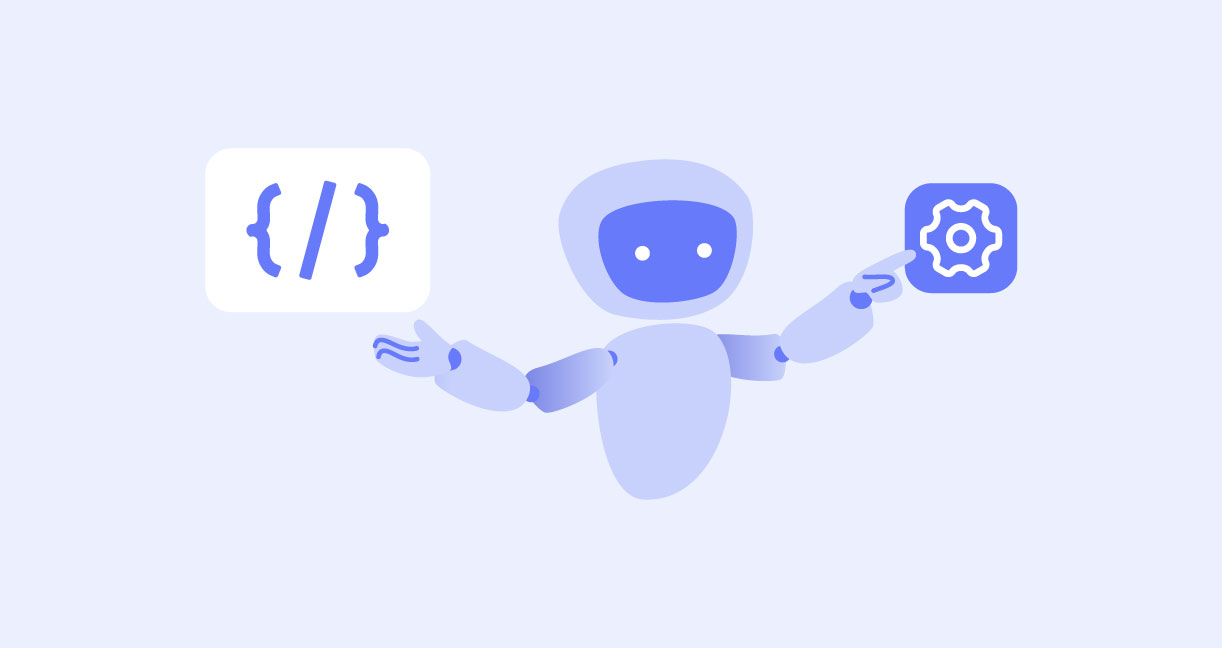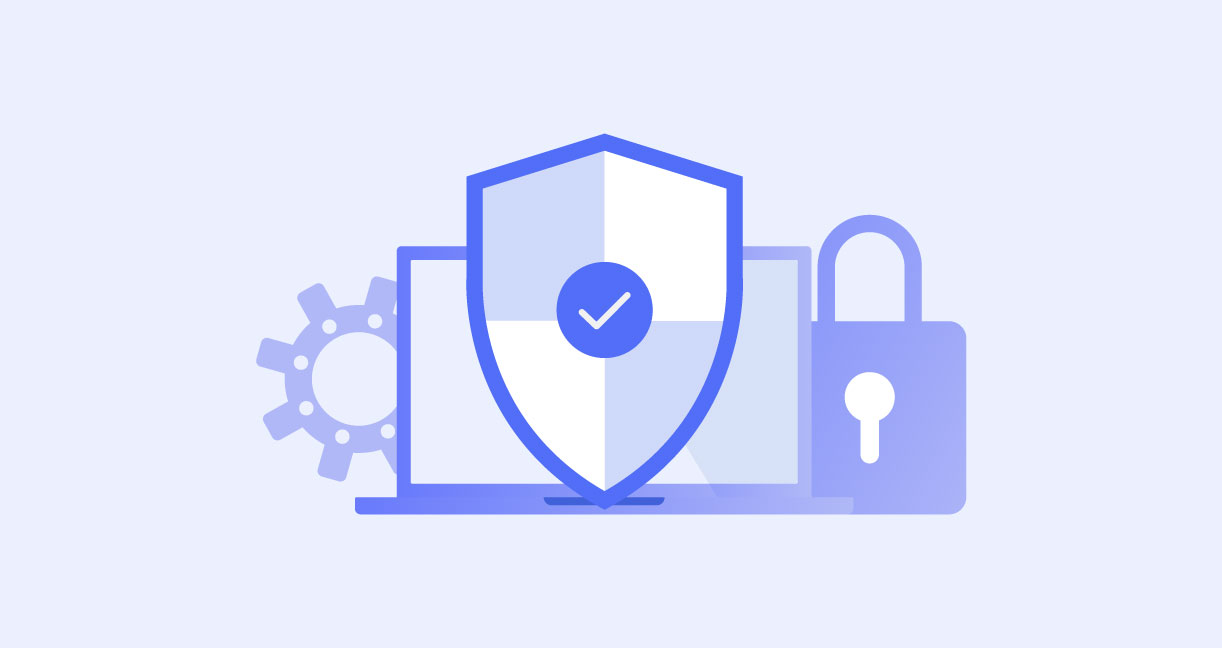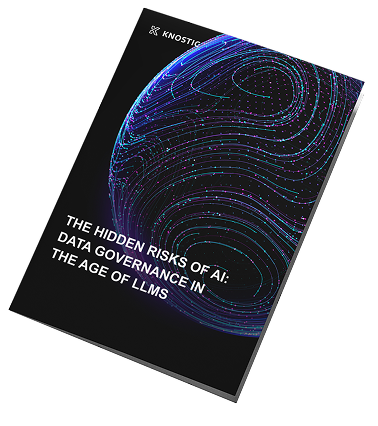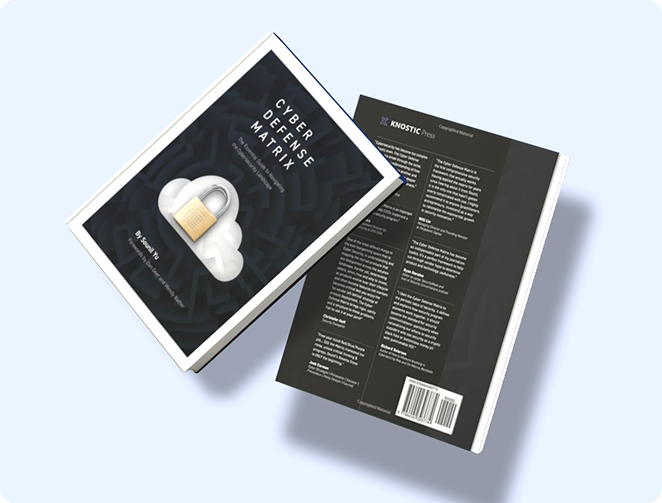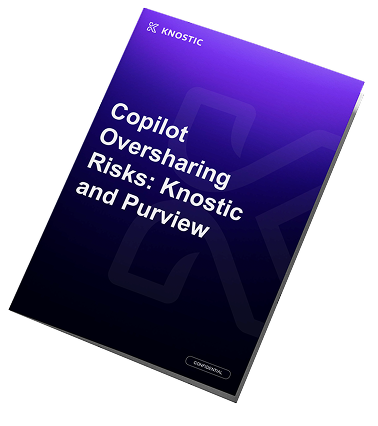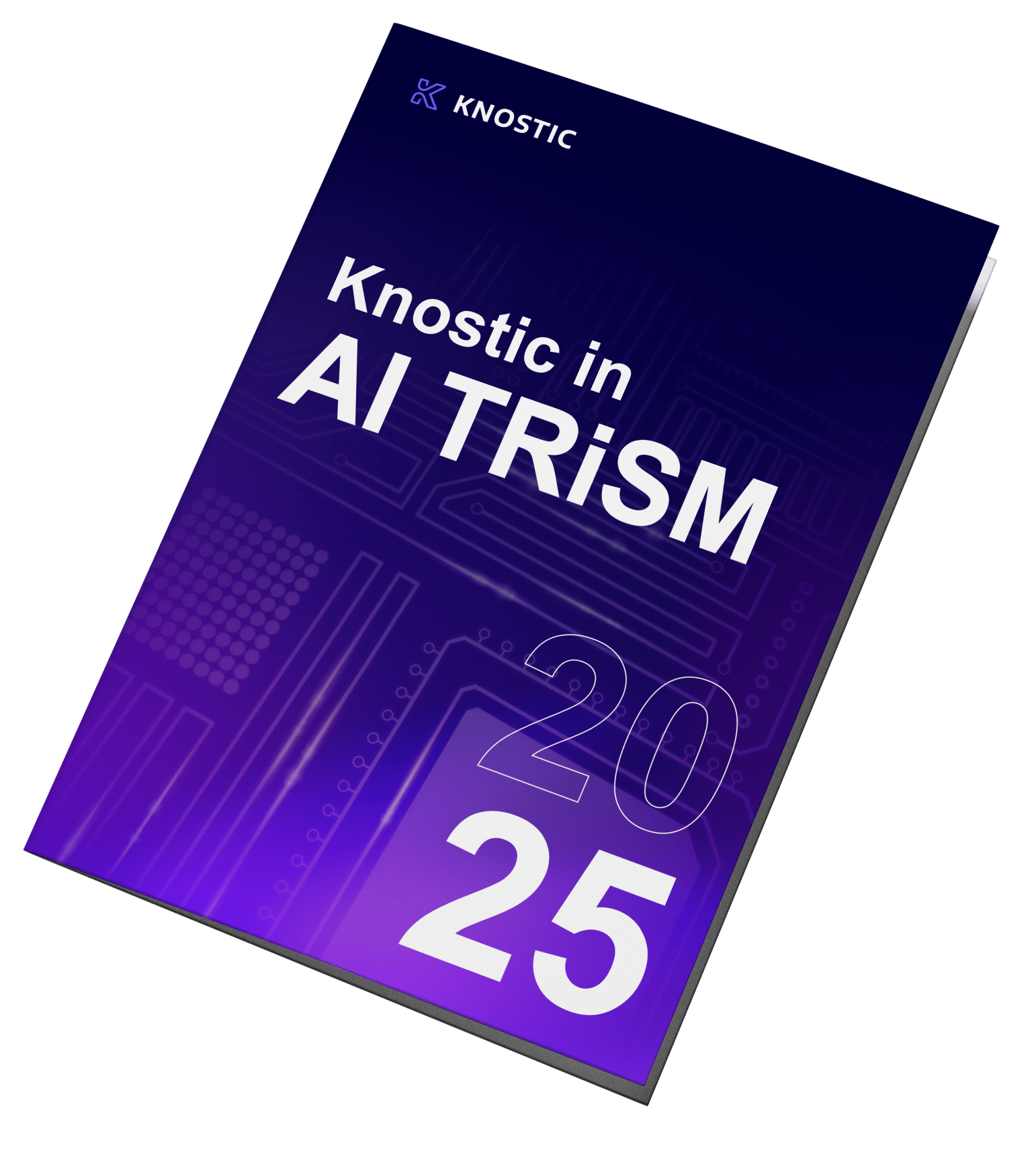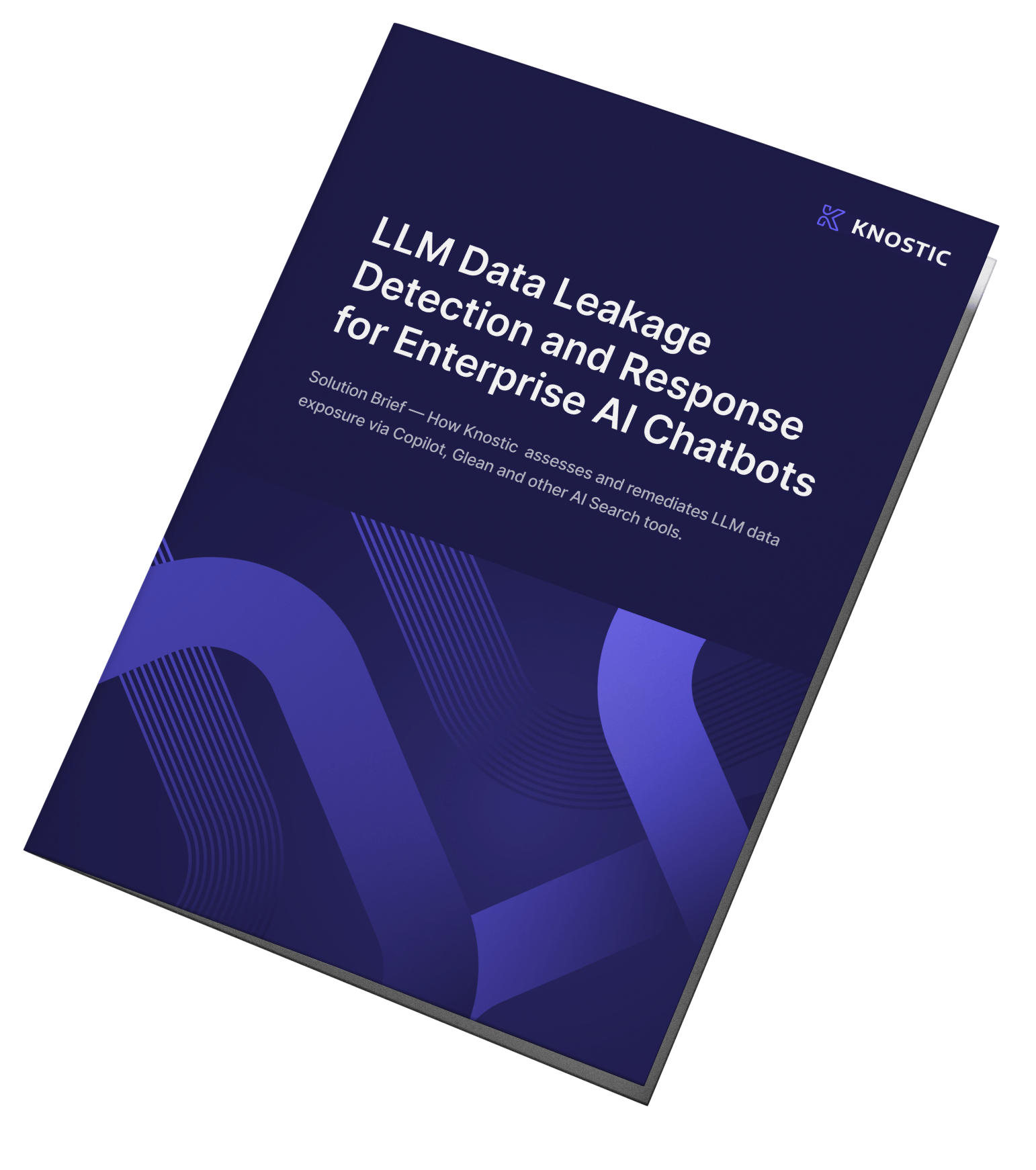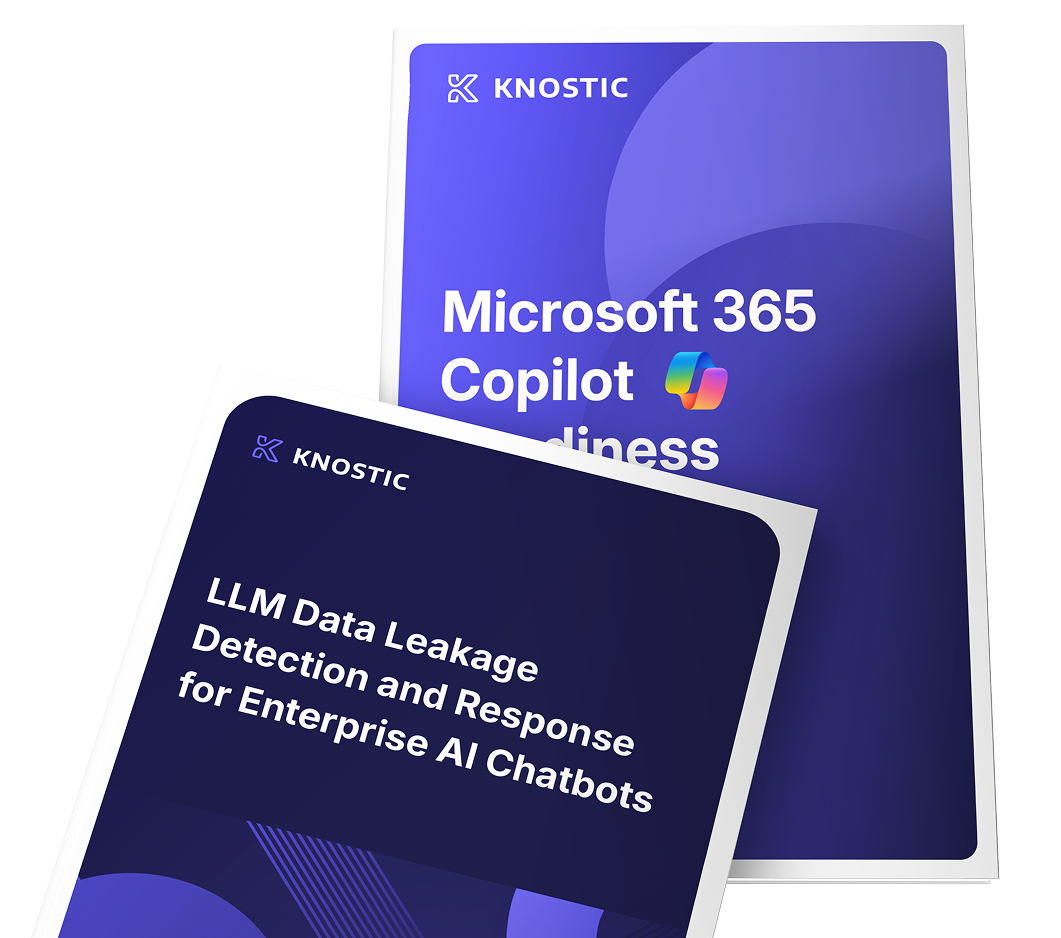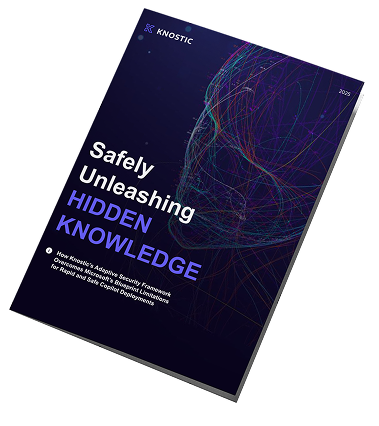Key Findings on AI Monitoring
- AI usage is accelerating, but so are risks: 85% of enterprises now use AI, yet many face challenges like sensitive data exposure, hallucinations, and prompt injections—often from internal misuse, not just external threats.
- AI monitoring must go beyond uptime: Effective enterprise AI oversight requires tracking usage, evaluating output quality, and monitoring for security and compliance breaches.
- Knostic delivers real-time risk visibility: Its monitoring platform reduces data exposure by over 40% in the first 3 months, detects oversharing, and maps interactions to knowledge-risk scores.
- Security gaps often come from within: Enterprises tend to underestimate internal risks like over-provisioning and rogue prompt behavior. Knostic’s testing framework helps proactively uncover and fix these issues.
- End-to-end observability is critical: Centralized telemetry, automated redaction, KPI benchmarking, and playbook-triggered remediation form a complete enterprise AI monitoring strategy that aligns productivity with trust and compliance.
What Is AI Monitoring in Enterprise Search?
AI monitoring is a process of continuously observing, analyzing, and evaluating how AI systems interact with data, users, and business processes to ensure responsible and efficient operations. AI monitoring in enterprise search ensures that AI systems operate effectively and securely, but also in alignment with organizational goals. This monitoring has three dimensions: usage, quality, and security.
Usage Monitoring
Usage monitoring tracks how AI tools are adopted and used. According to F5's 2024 State of AI Application Strategy Report, while 75% of enterprises are implementing AI, 72% report data quality issues and challenges in scaling data practices. This highlights the importance of monitoring user engagement and adoption rates. It ensures that AI tools are integrated into workflows and deliver real value.
Quality Monitoring
Quality monitoring assesses the accuracy and reliability of AI outputs. Data quality is needed for every phase of its development, including accuracy, completeness, consistency, and timeliness. Evaluating these metrics helps to have efficient and fair AI systems. But also implementing data governance frameworks (i.e., structured policies and processes for managing data quality, access, and security) that include automated quality checks, such as data validation and anomaly detection, is needed for maintaining high-quality AI outputs.
Security Monitoring
Security monitoring safeguards against unauthorized access and data breaches. Network traffic analysis systems and user behavior analytics platforms play a critical role in identifying unauthorized tools and flagging potential policy breaches. Furthermore, AI security operations have been shown to improve productivity; for instance, adopting generative AI tools in security operations centers is associated with a 30.13% reduction in the mean time to resolve security incidents.Many enterprises standardize on AI security platforms to unify telemetry, policy enforcement, and incident response across assistants, retrieval pipelines, and data sources.
Knostic provides a solution for AI monitoring in enterprise search. Their platform offers real-time detection of sensitive data exposure and provides dashboards that map AI interactions to potential risks. Knostic's Copilot Readiness Assessment enables organizations to identify and remediate overshared content proactively. This approach not only improves data security but also streamlines compliance processes. It provides detailed logs and reports, supports regulatory audits, and reinforces organizational accountability.
Key Metrics to Track
When an enterprise is deploying AI, monitoring key metrics are needed to optimize performance, and ensure security. It also has the aim to align AI usage with organizational goals. There are three key areas to focus on: adoption and engagement, answer quality and groundedness, and security and compliance signals.
Adoption & Engagement
Tracking the adoption and engagement of AI tools like Microsoft 365 Copilot provides insights into user behavior and tool effectiveness. Metrics such as the number of enabled users versus active users help organizations understand utilization rates. For instance, organizations can monitor the percentage of active users engaging with Copilot features over a 28-day period, as reported in Microsoft’s usage dashboards, to assess adoption levels. These vendor-reported metrics reflect internal Copilot tracking. Benchmarking these metrics against industry standards can inform strategies to improve user engagement while maximizing return on investment.
Answer Quality & Groundedness
Tools like Glean use LLMs to evaluate answer relevance, completeness, and groundedness. The Glean AI Evaluator, based on Glean’s internal benchmarking studies, achieved a 74% human-agreement rate, showing how effective it is in aligning AI outputs with human judgment. With the process of continuously monitoring these metrics, organizations can maintain high standards of information accuracy and strengthen user trust.
Security & Compliance Signals
Monitoring security and compliance involves analyzing LLM audit logs for specific signals such as operation types, record types, and flags like JailbreakDetected. These logs provide detailed records of user interactions and administrative activities related to AI applications. Implementing audit logging improves accountability and ensures adherence to regulatory requirements. AI access control plays a foundational role in this process, ensuring that only authorized users and roles can initiate or receive specific AI outputs, thereby minimizing the risk of unauthorized data exposure. With a focus on these metrics, enterprises can effectively manage AI deployments and ensure they deliver value while maintaining security and compliance.
Common Pitfalls Across Search Assistants
Enterprise AI search assistants present several challenges that can compromise their effectiveness and security. In the following, we will analyze the common pitfalls with search assistants.
RAG systems are designed to improve AI responses by retrieving relevant documents to ground the generated content. However, these systems can still produce hallucinations, confidently stated inaccuracies, especially when the retrieval component fails to fetch pertinent information or when the AI model misinterprets the retrieved data. A study by Monte Carlo Data highlights that hallucinations remain a reliability issue in AI applications and often stem from poor source data quality and drift in the embedding space (i.e., shifts in how the model represents relationships between data points over time).
Then we have prompt or Jailbreak attempts. AI systems like Microsoft Copilot are susceptible to prompt injection attacks, where malicious inputs are crafted to bypass the model's safeguards. These jailbreak attempts can lead to unauthorized actions or the generation of inappropriate content. Microsoft has implemented audit logs to detect such activities, enabling near-real-time llm monitoring and rapid response to potential security breaches. However, the effectiveness of these measures depends on the organization's ability to monitor and act upon the logged data promptly.
Moreover, a significant challenge in enterprise environments is the presence of data silos, which hinder monitoring and analysis of AI system activities. Integrating enterprise AI observability into Security Information and Event Management (SIEM) systems is important for centralized monitoring. Advanced SIEM solutions, like those offered by Elastic, support AI usage analytics to detect and respond to threats across diverse data sources. However, the integration process can be complex, requiring careful planning to ensure that all relevant data is captured and analyzed effectively.
Knostic’s monitoring team has consistently observed that many enterprises underestimate the frequency of internal prompt injection attempts, focusing mainly on external threats. Drawing on deployment experience, Knostic emphasizes the need for continuous internal oversight and proactive testing to close these often-overlooked security gaps.
End-to-End AI Monitoring Framework
Implementing an end-to-end enterprise AI monitoring framework is used to ensure the effective, secure, and compliant operation of AI systems. This framework supports 4 components: centralized telemetry, automated redaction and policy checks, benchmarking against business KPIs, and alerting with remediation via playbooks.
#1 Centralize telemetry
Centralizing telemetry involves aggregating data on AI system usage, output quality, and security events into a unified monitoring platform. This consolidation enables visibility and supports the correlation of metrics across different dimensions. For instance, integrating telemetry data can help identify patterns such as increased latency correlating with specific user queries or security incidents linked to particular usage behaviors. Such insights are needed for proactive system optimization and risk mitigation.
#2 Automate redaction & policy checks in real time
Automating redaction ensures that employees may identify and handle sensitive information appropriately without manual intervention. AI redaction tools can detect and obscure personally identifiable information in real time ensuring simultaneous compliance with regulations like GDPR and HIPAA. For example, AI redaction solutions have shown efficiency gains, reducing the time required to process and redact sensitive data by up to 90% compared to manual methods.
#3 Benchmark against business KPIs
Benchmarking AI system performance against business KPIs allows organizations to assess the impact of AI on operational efficiency and risk management. Key performance indicators such as task completion rates, error reduction, and incident response times provide measurable outcomes to evaluate AI effectiveness. For instance, organizations that use AI for incident response have reported a 30% reduction in mean time to resolve security incidents, highlighting the value of aligning AI performance with business objectives.
#4 Alert & remediate via playbooks
Establishing automated alerting mechanisms and remediation playbooks enables swift responses to anomalies or policy violations. When the system detects deviations from expected behavior, predefined playbooks can trigger actions such as revoking access to compromised plugins or initiating retraining processes for AI models. This approach ensures consistent and timely mitigation of issues, reducing potential disruptions and maintaining system integrity.
Where Knostic Fits: Continuous Knowledge-Security Monitoring
Knostic provides a solution for continuous knowledge-security monitoring in enterprise AI systems and addresses important challenges in data protection and compliance. Knostic's platform offers real-time monitoring to identify and redact sensitive information in prompts and outputs generated by LLMs. This approach ensures that confidential data is not inadvertently exposed during AI interactions. With these dynamic redaction mechanisms, Knostic helps organizations to maintain data privacy but also to follow regulatory requirements.
To assess and improve the reliability of AI systems like Microsoft Copilot and Glean, Knostic conducts simulated adversarial attacks. These tests mimic potential threats, such as prompt injections and unauthorized data access attempts. It helps organizations to identify vulnerabilities but also to strengthen their AI defenses. This testing is needed for maintaining the integrity and security of AI applications.
Additionally, Knostic provides a centralized dashboard that maps AI interactions to knowledge-risk scores and offers a clear overview of potential data exposure risks. This visualization enables security and IT teams to monitor AI effectively, identify high-risk areas, and implement necessary controls to mitigate potential breaches. The dashboard's insights support informed decision-making and strategic risk management.
Finally, with the integration of Knostic's monitoring capabilities, security and IT teams can reduce audit cycles through automated data tracking and reporting. The platform enforces organizational policies in real-time and ensures consistent compliance with data governance standards.
What’s Next
To further explore Knostic's approach to LLM data governance and its applications in enterprise settings, download our white paper.
FAQ
- How is AI monitoring different from traditional APM?
Traditional application performance monitoring -APM focuses on system performance metrics like uptime and response times. In contrast, AI monitoring includes the supervision of AI aspects such as model behavior, data handling, and compliance with ethical standards. It involves tracking AI interactions, detecting anomalies, and ensuring that AI outputs align with organizational policies and regulatory requirements.
- Does logging every prompt violate user privacy?
Logging prompts are needed for monitoring and improving AI systems; however, it raises privacy concerns. Knostic addresses this by implementing privacy-preserving measures, such as anonymizing data and restricting access to logs. These safeguards ensure that while the system maintains comprehensive monitoring capabilities, it also upholds user privacy and complies with data protection regulations.
- How does Knostic secure LLM feedback loops?
Knostic secures LLM feedback loops by continuously monitoring AI interactions and implementing real-time redaction of sensitive information. The platform conducts simulated adversarial attacks to test the resilience of AI systems and employs a unified dashboard to track and manage knowledge-risk scores. These measures help that feedback loops are protected against data leaks and unauthorized access, maintaining the integrity and security of AI operations.

